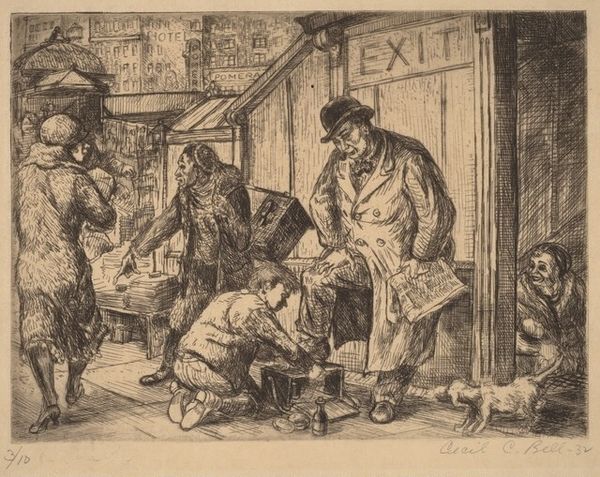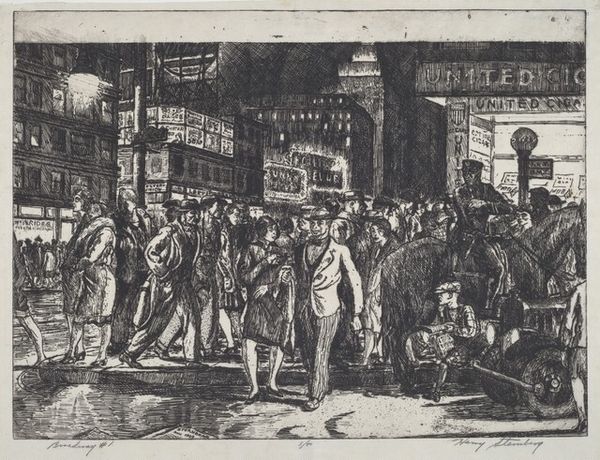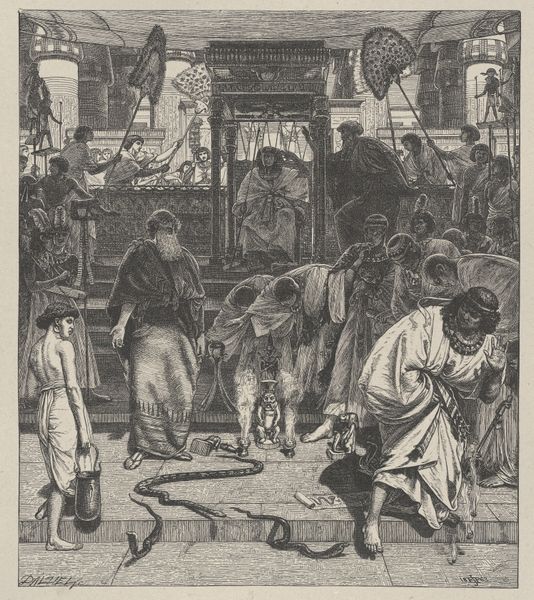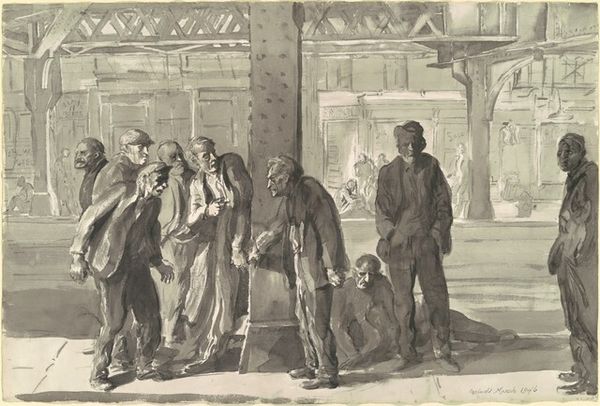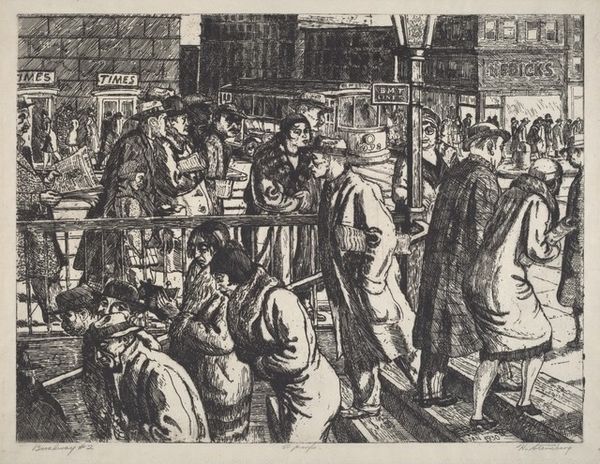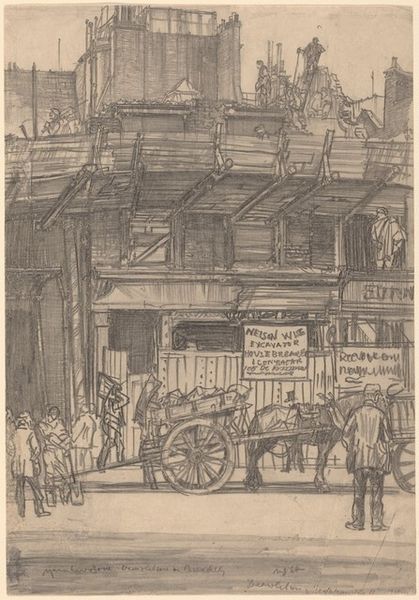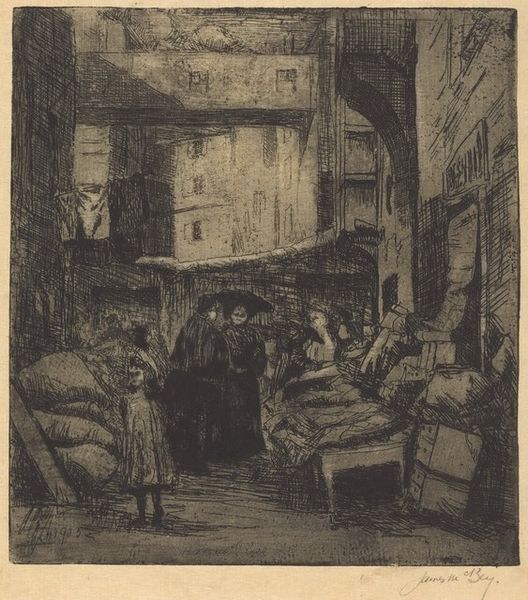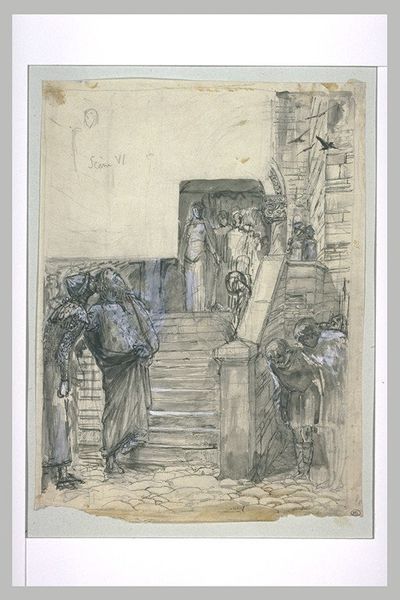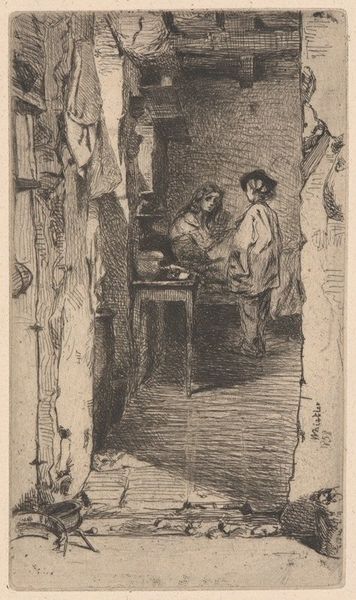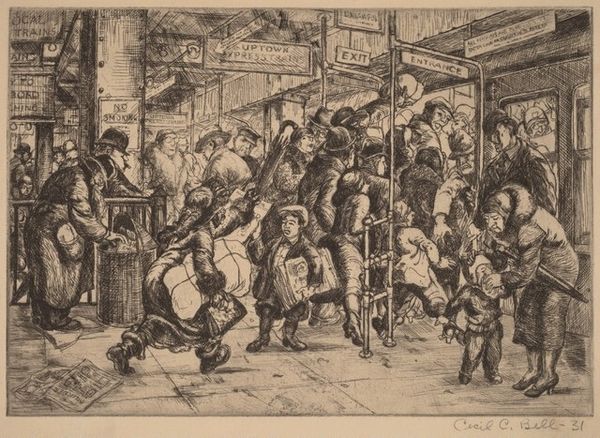
print, etching
# print
#
etching
#
ashcan-school
#
cityscape
#
genre-painting
#
realism
Dimensions: plate: 30 × 22.5 cm (11 13/16 × 8 7/8 in.) sheet: 37.2 × 26.6 cm (14 5/8 × 10 1/2 in.)
Copyright: National Gallery of Art: CC0 1.0
Curator: Reginald Marsh's 1934 etching, "Smokehounds," certainly paints a vivid picture. The overwhelming gloom emanating from this print is almost suffocating. Editor: The choice of etching as a medium is key here. Its capacity to produce such densely packed lines really conveys a palpable sense of urban grit. It mirrors the very atmosphere that Marsh is representing, a milieu defined by labor and material circumstances. Curator: Absolutely. The print showcases a cluster of men congregating near what appears to be a Bowery mission—note the sign above, and the cross just above that. There’s one man collapsed on the ground; he seems to be the focal point, with others milling about him, paying attention, or simply disinterested. It's almost a freeze-frame of despair and indifference, revealing a forgotten segment of society. Editor: Yes, it underscores the precariousness of life on the margins. There is that fascinating contrast between the supposed safe space offered by the mission, versus the stark realities of those forced to exist in proximity to it. The use of grayscale helps the image convey a feeling of the abject failure of the promises of American capitalism during the Depression Era, as well. Curator: Note Marsh’s skillful employment of cross-hatching, a labor-intensive method. In a similar fashion to etching’s dependence on tactile artistry, Marsh’s works, particularly this one, speak to larger questions of manufacturing, consumption, and circulation within capitalist economies. Editor: And considering that he made several paintings and prints depicting burlesque shows and Coney Island, one wonders: What compels Marsh to return to this subject of impoverished urban men, who appear so often ignored or outright rejected by broader society? There is a conversation to be had concerning who has access to both labor, and leisure. Curator: Perhaps he's reminding us of the labor required to even maintain, let alone appreciate, that leisure. This particular piece leaves me questioning what aspects of labor this man performs to reach this degree of despair; I feel there is room for that discussion here. Editor: Indeed. By documenting their very presence, he refuses to allow their experiences to be erased from the narrative of American life. And reminds us that social structures must undergo radical shifts to properly account for every member of the society in question. Curator: It encourages a certain critical engagement and reminds me that this isn't just a portrayal of a single moment, but also, a comment on the larger social fabric that produces such moments, through and through. Editor: Precisely. Marsh gives us both process and context to examine here.
Comments
No comments
Be the first to comment and join the conversation on the ultimate creative platform.
